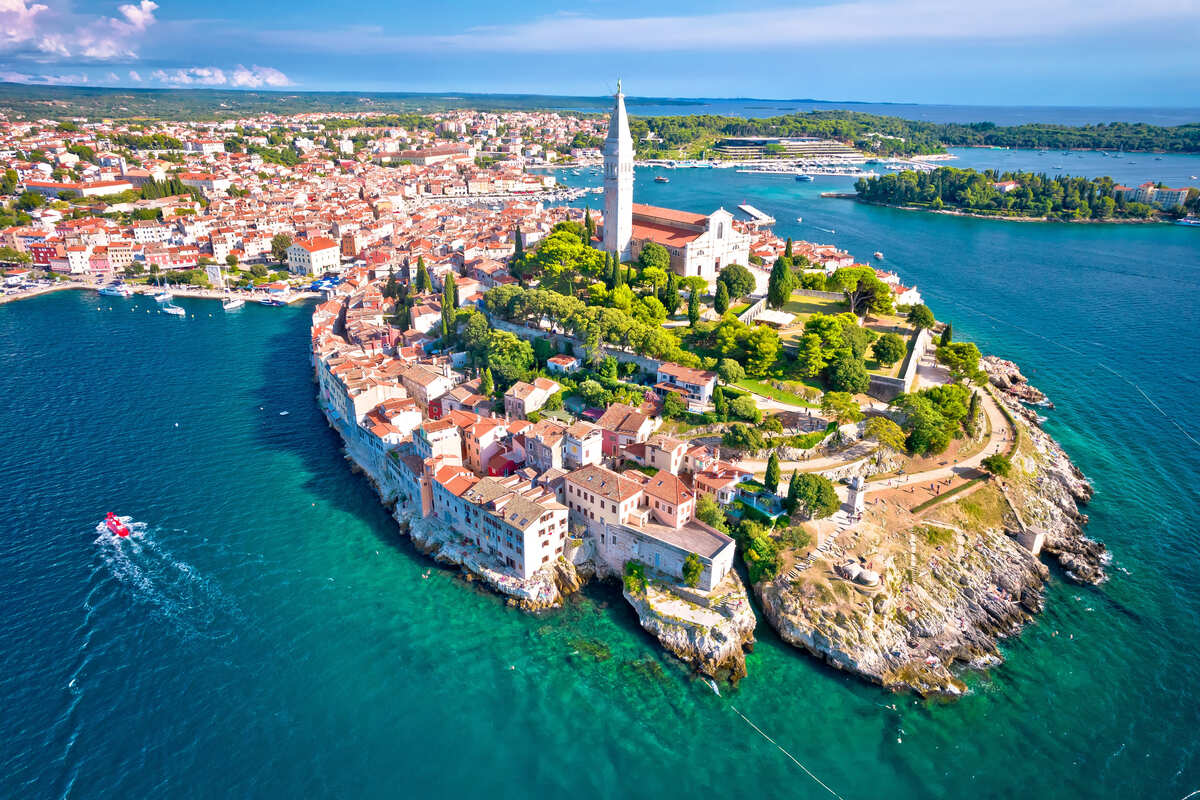[ad_1]
Last Updated
Very few countries have had such a successful trajectory in recent decades as Croatia has.
Previously a part of Yugoslavia, a communist-leaning federation that also comprised Serbia, Montenegro, Bosnia and Herzegovina, and a number of other South Slavic states in Southeastern Europe, it re-emerged from this dark era a more open, incredibly Westernized state.

Year after year, it keeps inching closer to Western values, as well as becoming a more attractive tourist destination by actively investing in the local industry and cementing its status as a key Mediterranean player – this in spite of facing strong competition from Italy, Spain, and the like.
This year, Croatia’s popularity surged even further among vacationers as it recorded a 16% year-on-year increase in arrivals, but what’s behind these numbers, and where could it be headed next?
Why Croatia Is So Popular Right Now

During the pandemic, Croatia became America’s go-to European destination as it was, at one point, the one country in the European Union where they could travel restriction-free.
While all of Europe openly discouraged Americans from visiting or even banned them altogether in light of the health crisis, Croatia welcomed them with open arms. Understandably, it shot to the top of the tourism charts at a time when Italy, Spain, and other competitors took a step back.
As soon as normality resumed and Europe began opening its doors one more time, travel experts wondered whether Croatia’s newfound fame was temporary. After all, there were far bigger players back in the field, but as they would soon learn, it wouldn’t be scaling back anytime soon.

From January to June of this year, it recorded over 6.7 million arrivals, a 16% increase over 2022. This is particularly impressive seeing that 2023 is the first official post-pandemic year, and some Mediterranean countries are yet to fully bounce back.
This means tourists are flocking into Croatia in droves, and perhaps even favoring it over other countries when planning their idyllic Mediterranean getaway, but why would that be so?
Croatia’s Tourist Offer Is Vast
Croatia sits on the shores of the Adriatic Sea, which many mistakenly believe is an independent inlet, but that is in fact merely a branch of the wider Mediterranean basin.

With a coastline that extends for over 1,100 miles, dotted with ancient cities dating back millennia and scenic beaches bounded by turquoise waters, blessed with year-round warmer weather, Croatia is Europe’s new favorite sunny getaway.
It’s no surprise it claimed the number one spot for booking trends last summer, as millions of travelers landed on the Dalmatian Coast to experience that slow-paced Mediterranean lifestyle and absorb the fascinating local culture.
Cities like Dubrovnik and Split continue being an endless source of fascination for visitors, particularly those hailing from across the pond.
Game of Thrones Filming Locations And Ancient Roman Palaces

Dubrovnik in particular has been in the American imagination for years now since it featured on the TV blockbuster Game of Thrones as King’s Landing, the fictional capital of the fantastical kingdom of Westeros.
The city itself is famous for its UNESCO-protected Old Town, still perfectly preserved within huge, historical walls, and has an up-and-coming resort scene.
Split, on the other hand, has the perfect blend of ancient and modern, with a historic center enclosed behind a monumental Roman palace and a lively boardwalk lined with palm trees, alfresco dining spots, and charm-filled cafés.
Where To Go For Those Mediterranean Vibes

Further up the Dalmatian Coast, Zadar is not to be missed also, being a sought-after destination for its thousand-year-old Roman ruins and landmark campanile, as isn’t Rovinj, a walled town sitting on a peninsula stretching out into the bright-blue Adriatic.
If it’s some wine tasting you’re after, the rolling green hills of Istria are packed with family-owned vineyards with a rich tradition of winemaking, and their close historical ties to Italy – particularly the city of Pula – will make you feel as if you’ve crossed an invisible border.
Further inland, tourists will also find verdant nature reserves, including the stunning Plitvice Lakes, where rows upon rows of majestic waterfalls cascade into a milky-blue lagoon, and the Paklenica National Park, a favorite among hikers and camping enthusiasts.

An Exciting Capital City
Let’s not forget Zagreb, Croatia’s overlooked and seriously underrated capital city:
Though it doesn’t straddle the coast, and as a result, it is often bypassed altogether by sun seekers who are eager to get to Dalmatia first thing, it is far from being a mere financial center, being home to a landmark medieval cathedral, a cobbled Old Town, and beautiful Central European architecture.
As you might have guessed, Croatia appeals to several different categories of travelers, and it’s precisely this diversity that gives it strength to face up to other Mediterranean giants – but that’s not all.

Part of Croatia’s new popularity peak is owed to the country’s investment in improving infrastructure.
Croatia Is Developing Fast
Just this year, the Government officially opened the long-awaited Pelješac Bridge, which connects the famous tourist town of Dubrovnik to the mainland. It was previously cut off from the Croatian mainland by a small part of Bosnia and Herzegovina (a neighboring country).
Prior to the bridge opening, as a rule, tourists headed for Dubrovnik from Northern Dalmatia had to exit Croatia, transit Bosnia and Herzegovina via the ‘Neum’ corridor, and enter Croatia a second time, which often entailed a long wait time at the border and unnecessary bureaucratic steps.

Now, tourists driving from North to South, or vice-versa, can simply bypass the third country altogether – unless they plan on collecting a passport stamp from Bosnia – and reach Dubrovnik with minimal hassle and minimal wait.
Croatia Is Now In The Eurozone
Furthermore, Croatia has now joined the Eurozone, which means you will no longer have to change your Euro notes into kuna landing in Croatia, and pricing is a lot easier to interpret.
No more worrying about withdrawing ‘too many’ kuna or finding ways to spend it before you leave Croatia, as the bills won’t be accepted anywhere else in Europe:

If you get a hefty sum of cash out, either because you feel more comfortable carrying some cash, or because certain parts of Croatia are not as credit card or Apple Pay-friendly, you will still be able to use it in 20 other European countries.
Granted, Croatia has gotten considerably more expensive now that it’s been ‘Euroized’, but this has proven a significant boost to local businesses, who had to operate under an ever-changing conversion rate and oscillating prices.
Croatia Is Part Of The Schengen Area
Besides joining the Eurozone, Croatia has finally been inducted into the Schengen Area, a borderless zone comprising 28 European countries (Croatia included).

Previously, when traveling from Croatia to any other European country, tourists were made to undergo border screening at any checkpoint, such as air or land borders. Since January, however, these have been abolished between Croatia and other Schengen partners.
In simpler terms, traveling between Croatia and France, or Croatia and Italy, or Greece, Germany, or Spain will feel more like domestic travel than international travel, as there is no passport control for those commuting inside the Schengen Area.
With that being said, you should still carry valid ID – in the case of Americans, a valid passport – as it is required for boarding planes, trains, or international ferry lines, and there may be spot checks to ensure travelers comply with Schengen Area regulations.
This includes never staying for longer than 90 days out of any 180-day period.
Read More:
Top 5 Travel Insurance Plans Starting At $10 Per Week
How To Easily Earn Points For Free Travel
↓ Join Our Community ↓
The Out Of Town Blogs Community FB group has all the latest reopening news, conversations, and Q&A’s happening daily!

SUBSCRIBE TO OUR LATEST POSTS
Enter your email address to subscribe to Out Of Town Blogs’s latest breaking travel news, straight to your inbox.
This article originally appeared on outoftownblogs.com
Opinions expressed here are the author’s alone, not those of any bank, credit card issuer, hotel, airline, or other entity. This content has not been reviewed, approved or otherwise endorsed by any of the entities included within the post.
[ad_2]
